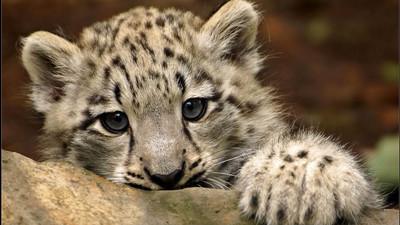(单词翻译:单击)
听力文本
“In India, as a consequence of stricter protection of wildlife and increased tolerance, numbers of large carnivores are increasing in private lands and lands outside the protected-area systems.”
Ullas Karanth of the U.S.-based Wildlife Conservation Society and India's Centre for Wildlife Studies.
“While this is a good thing for conservation it poses serious problems for management
because occasionally these interactions turn hostile, between people and carnivores.
And this issue is particularly serious with leopards.”
Karanth and his team studied interactions between people and leopards in Karnataka, a state in India's southwest that's home to more than 60 million people.
Leopards can be found in 47 percent of the state, in areas outside parks and other sanctuaries.
So people and leopards do, every once in a while, run into each other.
To gauge the frequency of such interactions, the researchers scoured media reports during a 14-month period from 2013 to 2014.
The total tally was 245 separate incidents.
Most were attacks on livestock or simple sightings of the leopards by people.
But leopards did attack people 32 times, causing three deaths.
Thirty-four leopards died in the study period, mostly from poaching and being hit by vehicles.
Capturing and relocating the animals did not seem to be an effective way to cut down on animal-human contacts.
The study is in the journal PLoS ONE.
So how can the large carnivores and people better coexist?
The researchers think that an obvious but important step is to get a lot more data on just where leopards are most likely to be found in populated areas, so people can avoid the cats.
And that farmers should be quickly and fairly compensated for any livestock losses.
Which seems to be a better alternative than trying to hunt down and kill or move the offending animal.
参考译文
由于印度不断加强对野生动物及生态系统的保护力度,私人领地及保护区外的大型食肉动物数量正不断增加。
美国野生动物保护协会及印度野生动物研究中心的尤拉斯·卡拉特说道:
虽然保护动物是一件善举,但同时也引发管理方面的严重问题。
因为有时人类与食肉动物之间存在敌对关系。
而人与豹子的关系就尤为严重。

卡拉特和他的研究小组对位于印度西南人口约6000万的卡纳塔卡邦人与豹之间的关系进行了研究。
在这个邦的国家公园及其他保护区外,47%的区域内都可以见到豹子的身影。
因此人和豹子会偶然相遇。
为了探究人与豹子的接触频率,研究人员对2013至14年间14个月的媒体报道进行了分析研究。
这期间总共发生245起事故。
大多数报道都是涉及豹子袭击牲畜或者是人们看到豹子的身影。
但有报道显示豹子曾32次袭击人类,并造成3人死亡。
在研究期间有34只豹子死亡,死因大都是因为遭猎杀或被车辆撞死。
捕杀或迁徙似乎并没有减少人与动物之间的接触。
这项研究已经在《PLoS ONE》杂志上发表。
因此如何才能让大型食肉动物与人类和谐共处呢?
研究人员认为最为重要的是获得在人口密集区域豹子活跃的更多数据,这样人们就能够避免同它们相遇。
而农民也能够迅速公平地得到牲畜损失的补偿。
相比猎杀或将这些具有攻击性的动物迁徙,这似乎是一种上上策。
译文为可可英语翻译,未经授权请勿转载!
重点讲解
1.between and 之间
例句:Between July and September, a total of 1,059 firms called in the receiver.
7月到9月间,一共有1,059家公司破产在管。
2.run into 碰撞;驱车造访
例句:When you run into a wall, turn right.
当遇到墙时,向右转。
3.each other 相互;互相
例句:The new neighbours were getting to know each other.
新邻居之间正在互相了解。
4.hunt down 追捕
例句:The hounds will soon hunt down the stag.
猎狗很快就会追到那头牡鹿。


